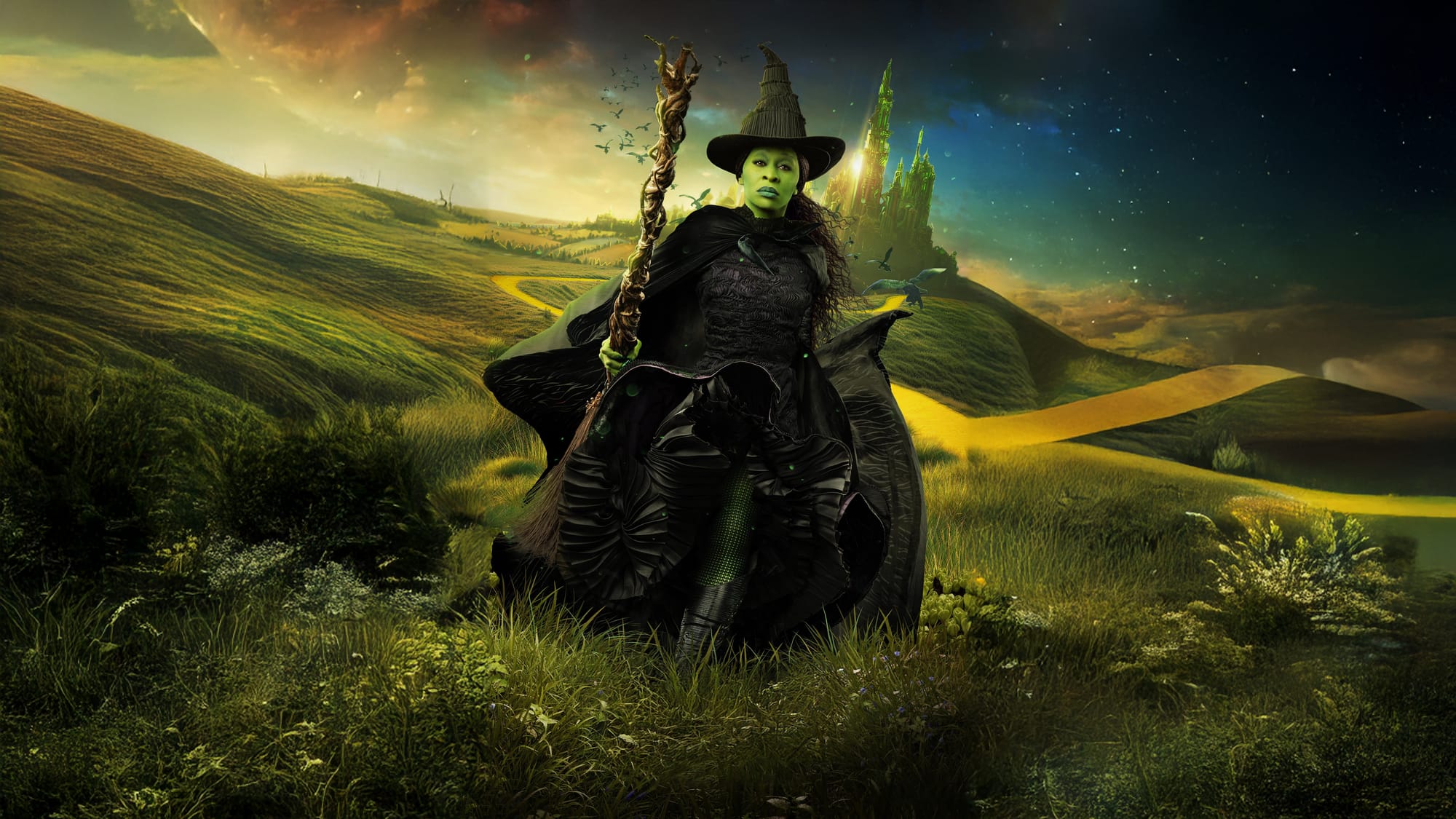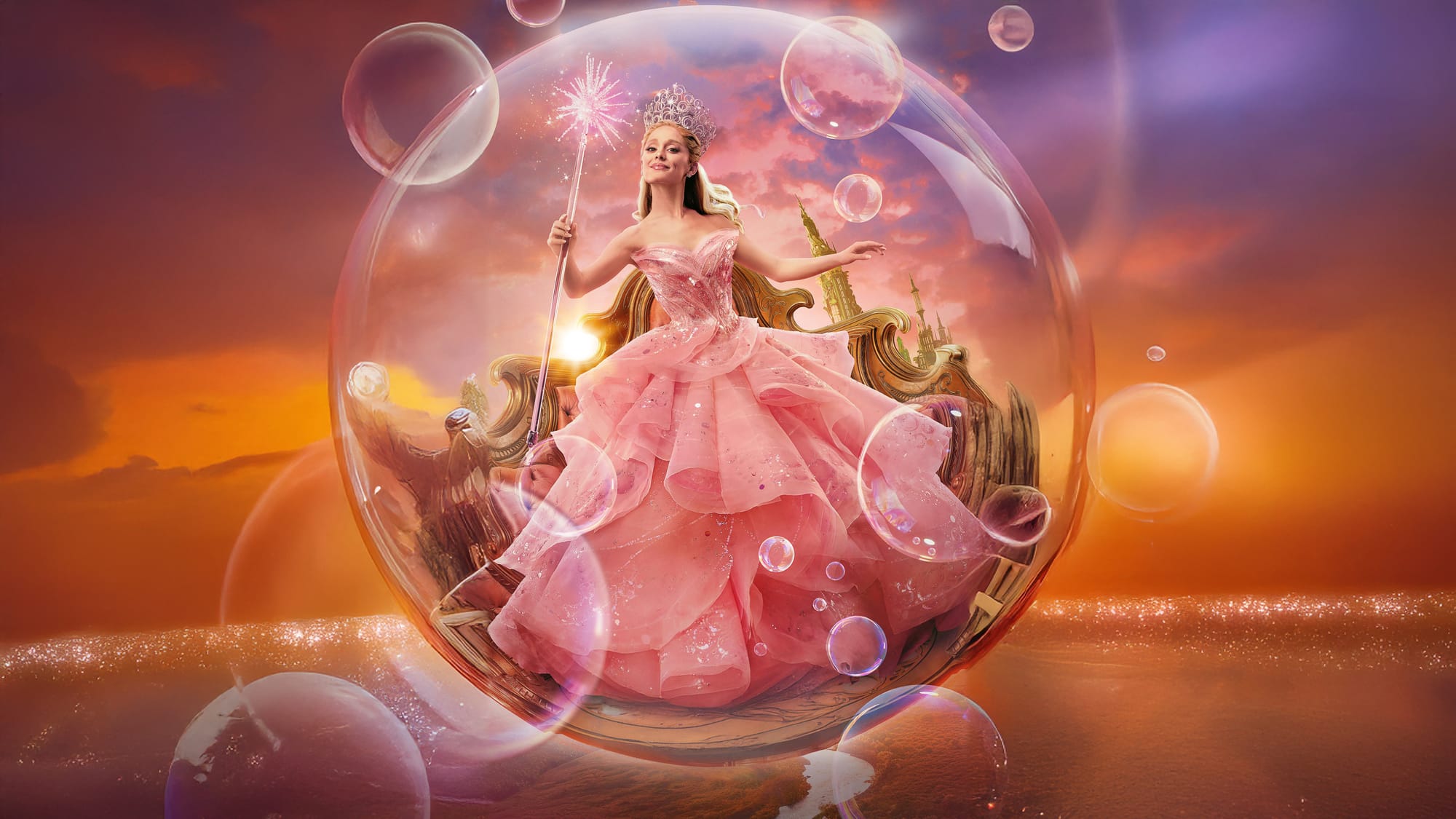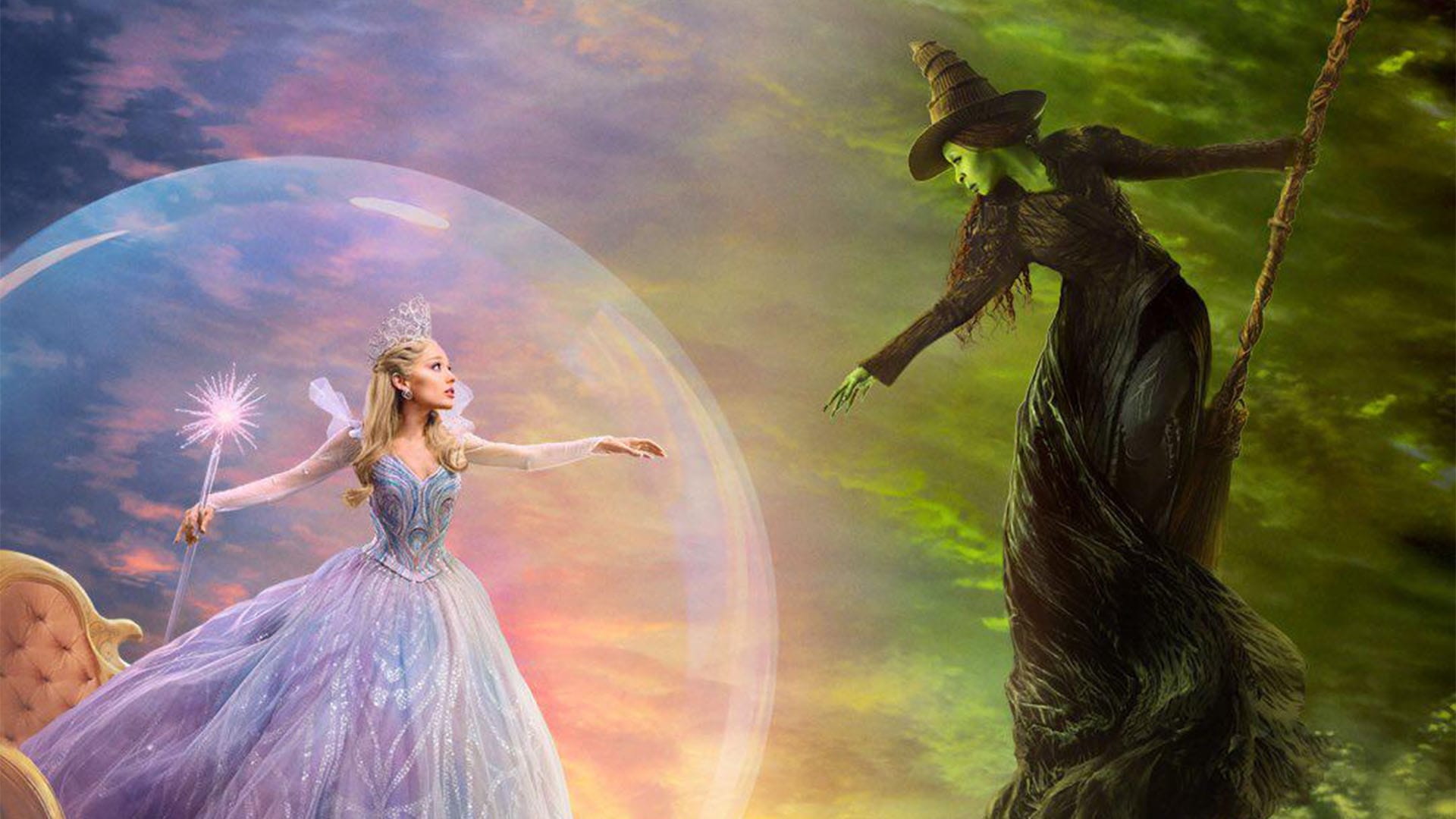Smoke and Bubbles: The Intertwined Struggles of Elphaba and Glinda

[Spoilers Ahead for Wicked]
“The desire to belong is in every human heart.” - Maya Angelou
In Wicked, two women, Elphaba Thropp and Glinda Upland, despite being painted as opposites, both seek similar sentiments of belonging and acceptance. On one side, you have Glinda (or ‘Galinda’, more properly), who, with her lively antics and lovable charm, shows her eagerness and ability to please all her admirers, through her ploys and clever ruses. And, on the other side, you have Elphaba, the alienated foreigner who, in response to the sneers and looks of disgust given to her by others, pushes back defensively against their initial perception of her, while internally longing with every fiber of her being to be treated equally. Over time, the two go on to become two of Oz’s figureheads, with one representing the face of goodness and moral uprightness, and the other becoming an outcast known famously as ‘The Wicked of the West’. Despite sharing the same desires, how could this unlikely pair’s journeys diverge so drastically?” Soon it will be shown how, even when two individuals share common goals, their differing approaches can ultimately determine their endings.

Bravado and Belonging: The Dual Heart of Elphaba Thropp
While Glinda hides her true self beneath polish and perfection, Elphaba shields her inner core behind outward pride and principle. The Wicked Witch, Elphaba Thropp, is introduced in the film as an outlier, with her green skin serving as a weighty obstacle that stands between her and others’ perception of her. Like smoke, Elphaba obscures others’ views of her by falsifying her using outward courage and bravado, setting in place immovable shields and barriers meant to keep her more vulnerable self protected from any vulnerability. However, while her initial responses to the Shiz faculty’s comments and reactions seem to indicate that she in fact doesn’t care about how her peers think about her, it is soon revealed that, deep down, she really does care. Very much so, in fact. Her first solo number, The Wizard and I, clearly illustrates her inward desire to be treated by her classmates and family members as they would treat their own. She dreams of how, once she is finally accepted as the Wizard’s apprentice, she can at long last rid herself of her revolting green skin. While she wants to belong, we learn that she has ultimately given up trying in her own strength to please others, believing that salvation through the magic and influence of the Wizard is the sole way to achieve her goal of equality.
We also see more examples of her diversion tactics in play during the Ozdust ballroom scene, where, upon arriving at the party in Glinda’s ‘gift’ (Her grandmother’s “hideodious” hat), she embraces her foolish appearance, hiding her deep embarrassment and loneliness. Yet, this marks a major turning point for her, despite showcasing her illusory disposition; here, Glinda joins her new friend’s side, becoming the first person to support her truly. She begins to learn not to shoulder all her burdens alone, instead carrying the weight alongside those close to her.
From here, the two become very close friends, with each finally finding their first true friend whom they can confide in. Elphaba begins lowering her barriers, parting the smoke of her being to let Glinda take a look at the girl deep inside. Even with her new companion’s many failed attempts at “Galindafying” her, she opens herself up to the possibility of being normal. Seeing how her friend truly wants to see her find a place, she gives it a fair try, even if it was only mildly successful.
Yet, Elphaba’s newfound status among the students at Shiz is short-lived, as her journey to the esteemed Emerald City molds the course of her life forever. It is there, in the place of the great and terrible Oz, that she learns the dark truth behind all the glitz and glamor the landscape covers up: her ‘Wonderful Wizard’ is no more than any mere man. The man she’d idolized since childhood was no more than any other stranger on the street. Deeper than that, she soon realizes that all her magic studies beforehand, all the preparation for her meeting the Wizard, every session with Madame Morrible, was all a way by which to manipulate her into joining Oz’s side, with her handling all the dirty work while he continued as the face of the kingdom. He intended to use her to silence any doubters and rebels that were bold enough to question what their land’s foundation was truly built upon, any who dared challenge the morals behind the countless acts their “Wonderful Wizard” had done
At this revelation, Elphaba’s eyes are opened. Her dreams were built upon fake truths, her desires stabilized with folly, facade holding up her vision of equality in society. But she also sees that, other than how she had been tricked her entire life, she had to decide: was she to accept his offer, standing alongside him and called ‘good’, yet forced to suffer inner turmoil? Or, would she reject his order, take up her own cause, and run with her beliefs no matter who might judge her? She could spend her life knowing everything she did was wrong, or she could spend it knowing that, even if they detested her very existence, she had at least stood by what she knew was right.
At this, she tosses aside her previous desire of belonging and acceptance, finally realizing that uprightness in others’ eyes is worth nothing if you aren’t true to what you yourself believe to be so. She takes on the mantle given to her as the “Witch of the West”, as all of Oz casts her out as ‘wicked’. Though, inside, she knows the truth: she is no more wicked than the rest of them. By challenging the world’s view of ‘good’ and ‘wicked’, she finally begins her crusade to expose the flaws behind Oz’s government. Her real journey begins, and, though she is indeed “flying solo”, at least she’s flying free.

Popular: The Perfectly Polished Pseudo-Persona of Glinda Arduena Upland
Where Elphaba cloaks herself in smoke, Glinda hides within a bubble of her own making — glossy, fragile, and safely contained. Her bubble she’s made keeps her true self out of touch, showcasing only the beauty and polish of the outside. This is the primary reason of her popularity and favor with everyone, until she meets Elphaba, the first person able to see through her. From the moment the two first encounter each other, Elphaba is able to tell that, even from the Glinda’s first remarks, that she’s a people-pleaser. That she’ll do or say anything in order to meet others’ expectations of her. And that, despite her confident disposition and sure-footed self-esteem, she too is just playing along with the crowd’s behavior.
As time goes by, Glinda learns to live with one eye always open, ready and searching for any signs of her newfound rival in Elphaba. After weeks of pestering and retaliation from both sides, Glinda finds the ultimate mean of payback: the hat. That “hideodious” witch‘s headwear given to her by her grandmother. By humiliating Elphaba in the face of all their schoolmates, victory would be handed straight into Glinda’s grasp. Yet after being granted her wish to learn Ozian magic with her idol, Madame Morrible, all thanks to her loathable dorm-mate, and when that glorious moment finally comes, she isn’t filled with tangible conquest. Instead, all she feels is pity and guilt over Elphaba’s spectcale, as she knows in her heart she is the cause of her sorrow. And, in a single act of selflessness, Glinda makes her first genuine friend.
The bond the two develop is the most unnatural thing either has experienced. While Elphaba never experienced any sort of friends before in her life, Glinda, having more followers than true companions, learns of the strength of an honest, vulnerable relationship. She becomes open to more than just herself, her bubble widening to let Elphaba into her private space. The authentic connection the two establish allows room for each to let out their true personalities, unleashing their full shine, as well as their exposed shadows. Glinda begins to show her quirkier side, as Popular brings to life her dynamic, unhinged, girl-like charm and goofy antics. She previously had never thought of behaving in such a way among her ‘friends’. But, after finally discovering a sincere confidant, she realizes she has no need to fabricate her personality when she’s with Elphaba’s - that she can finally be free to act as her and no one else.
But, when the two partners step foot into the Oz’s palace, and after their revolutionary discovery of the Wonderful Wizard’s faulty persona, Glinda and Elphaba find themselves at a crossroads. And, where Elphaba decides that she’d rather be ridiculed as the “Wicked Witch”, Glinda, filled with inner turmoil between her friend and figure, between loyalty and love. Will she stand by her friend’s side as she defies the expectations of society, or slink backwards into her safe bubble?
By staying within her comfort zone, she’s praised for her loyalty to Oz and the Wizard — lauded as ‘Glinda the Good’. And, as she becomes the face of uprightness and civility throughout the land, she equally abandons her only friend in the process. Her growth throughout the film takes a step backward, just as she puts her mask back on, this time with more stakes and weight than ever before.

Elphaba and Glinda: Bound by Desire, Defined by Choice
Both Elphaba and Glinda pursue a sense of belonging from others, although through different approaches. Where Elphaba initially diffuses and fogs up others views of her through exterior courage and bravado, Glinda shields her true being underneath a pristine, delicate bubble, only showing the glitz and glamor of the outside. The two’s newfound friendship molds their perception of worth and acceptance, providing openness and genuine care for the first time in forever. In the end, their opposing choices at the story’s climax solidify their destinies — forever divided, yet eternally bound. In their mirrored searches for belonging, they discover that acceptance often demands the sacrifice of authenticity.




